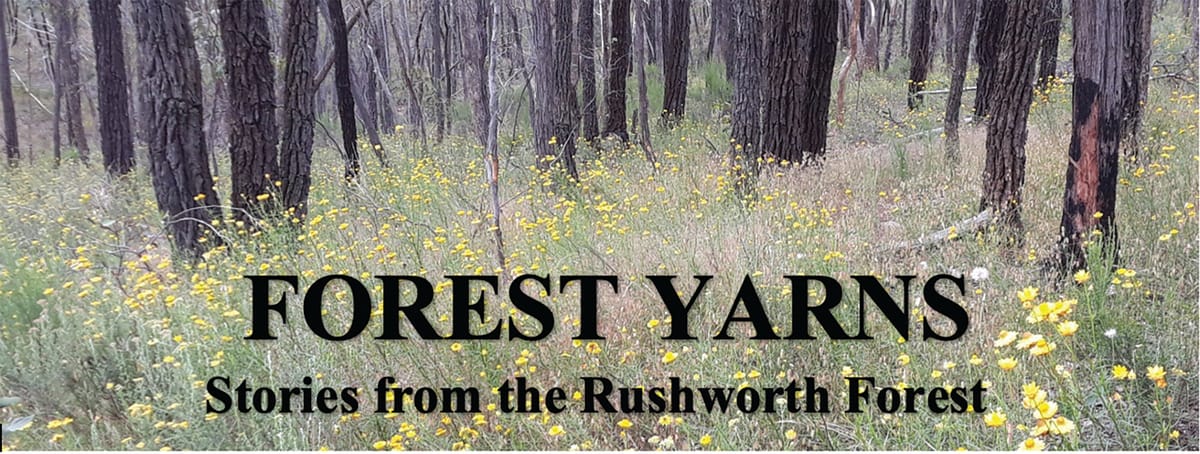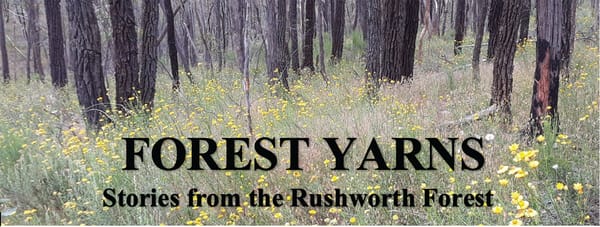Political action by sleeper hewers

Although sleeper hewers mostly worked independently in the forest, they acted co-operatively to achieve some of their aims. Their work was under threat with the appointment of Victoria’s first Conservator of Forests, George Perrin in 1888. Perrin was convinced that sleeper hewing was a wasteful method of getting sleepers and left forests more susceptible to bushfires. Sleeper hewers contended that there was minimal wastage. There were running battles over the twelve years that Perrin was in office until he died in 1900.
There was still plenty of demand coming from the Victorian Railways, a factor that favoured the local sleeper hewers. Commissioners of the VR maintained that hewn sleepers were more durable than those from sawmills and could generally be obtained more cheaply. Some sawmillers supported the views of Mr Perrin because they could see that they might obtain great economic benefits going forward.
Visit by parliamentarians
In 1895 a parliamentary delegation (including the Minister of Lands, Mr Best) visited Rushworth to look into the question of milling vs hewing sleepers.1 There was a possibility that the government might shut the forest to sleeper hewers. The delegation met with a deputation including forest workers, contractors, municipal leaders and local businesspeople.
There was clear disagreement with Perrin’s view that there was more timber wastage with hewn sleepers. The forest workers also maintained that there were still plenty of trees in the forest suitable for the production of sleepers.
The delegation was told that at the time, 250 men were employed in the forest sleeper hewing. Closure of the forests to sleeper hewers would result in substantial unemployment and hardship in local communities. Ultimately, sleeper hewing was allowed to continue.
Union action
In 1908, there was a meeting of sleeper hewers and other bushmen in Rushworth for the purpose of setting up a union.2 There was general discontent about a number of issues and a deputation was appointed to make approaches to the Conservator of Forests and the Victorian Railways commissioners. The major issue was the lack of access to many areas of the forest where the hewers could do their work. They also sought an increase of 1/- (10c) per sleeper in the amount that the railways paid them.
“Passing day” was the name given to the day when inspectors would be present at the local stations. As noted in the previous story, the inspectors would raise the ire of the sleeper cutters if they knocked back some of the proffered sleepers. One of the complaints was the inconsistency shown between various inspectors. The hewers wanted to see a more uniform system of passing.
Mr J Dooley represented the local sleeper hewers in the subsequent deputation to the Minister of Forests, Mr McLeod. Ultimately, some new areas were made available, but with significant restrictions on the number of licences issued.
Visit by the minister
In early October 1925, a bombshell was dropped. The forest was temporarily closed down to sleeper hewing. In late October 1925, the Minister of Forests, Mr H F Richardson, visited Rushworth and met a deputation of sleeper hewers (Wilson, Pettifer and Bredon sic) and other timber cutters from Rushworth, Heathcote and areas in between such as Bailieston and Costerfield. After the discussions, there was a tour of the forest to illustrate some of the points being made by the forest workers.
Representatives of the railways who were present stated that 25% of the department’s current needs were met by sleeper hewers in what was then often called the Moormbool Forest.2 (Two of the parishes down near Graytown, in the central part of the forest, are called Moormbool West and East)
It was claimed that at one time the forest supported 300 sleeper hewers, but at the time of the Minister’s visit, there were only 35. One reason for this was the restrictions placed on access to large areas of the forest. As a result of this, most of the suitable trees had already been cut out of areas the forest over a period of more than 40 years.3 The hewers unsuccessfully petitioned for the railways to accept sleepers with rounded edges so they could harvest smaller trees.
At the time, the State Government was grappling with the dual needs of maintaining employment in the forest areas as well as conservation of areas for future use. Although sleeper hewing was subsequently allowed to continue into the future, it was on a much-reduced basis compared to pre-1925.
References: 1 McIvor Times 31/5/1895; 2 Bendigo Advertiser 26/8/1908; 3 The Argus 23/10/1925 p17; 3 Geelong Advertiser 26/10/1925;










